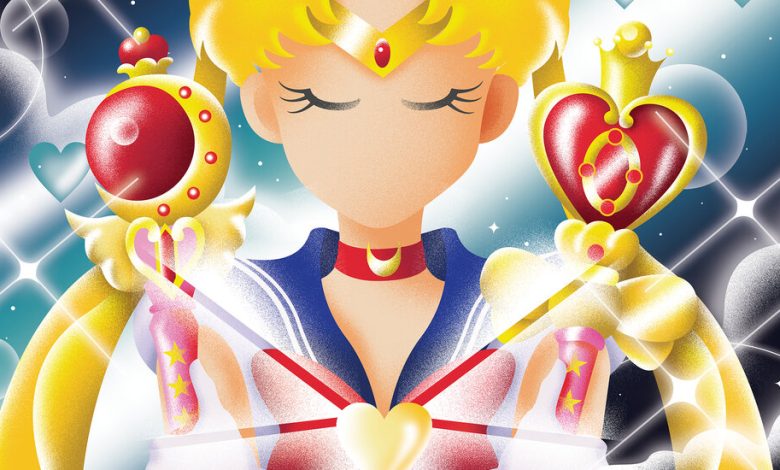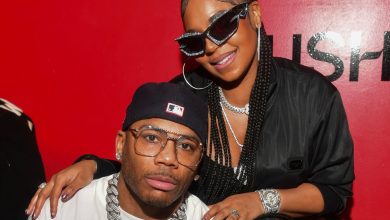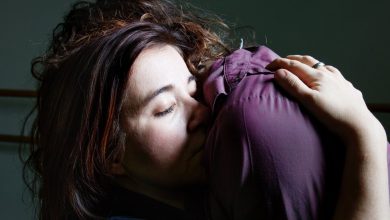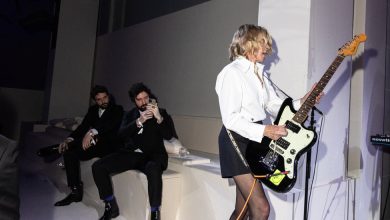I’ve Never Watched Anything as Transformative as ‘Sailor Moon’

The first lesbianrelationship I saw portrayed on-screen was in “Sailor Moon.” Uranus and Neptune were two characters who seemed undeniably in love. The show is Japanese anime, though, and I could only watch the English-dubbed version that called them “cousins.” The titular Sailor Moon and the other Sailor Scouts are celestial superheroes sent across time to protect Earth from nefarious forces. In the human world, they take on the appearance of ordinary girls, but can transform into their fighting selves via personal totems. Sailor Moon often has a compact mirror and shouts, “Moon Prism Power, Makeup!” before transforming during battle and declaring, “In the name of the moon, I’ll punish you!” Swoon.
“Sailor Moon” aired early on weekday mornings when I was in middle school, around 1995. I was a bookish tomboy in Compton, Calif., a working-class suburb full of Black and brown people, where superheroes looked more like gangsta rappers than anime characters. I went to Sunday school every week in stockings and Mary Janes and thought of femininity as a chore rather than a good time. I loved women but hated the imagined woman I was supposed to one day swell into, makeup and perfume and nail polish and gold jewelry signaling my arrival wherever I went like bells on a cat. In this vision, I worked and maintained a household and didn’t expect much acknowledgment for the effort — and certainly no fun.
I grew up watching horror movies with my mother in the ’80s because she didn’t care about ratings systems and liked what she liked and wanted someone to watch with her, which explains a lot about me. I also watched cartoons freely, without being minded. Animation was a safe place. I controlled the VHS tapes, and my family would scatter whenever the opening of “The Little Mermaid” boomed into the house. In the world of cartoons, I was alone and unobserved. I think queer artists recognize this medium as a place of solace and fantasy — a secret world running parallel to the one in which L.G.B.T.Q. humans and people of color are targeted by book bans that want to annihilate both us and evidence of our existence.
Comics have always been a place for dreaming, for silliness, for the disregard of rules that apply to anything from physics to the patriarchy. Yes, the medium can also be used to perpetuate dangerous and demeaning ideas, but the nature of the form makes room for fantasies both malicious and divine. The queer experience thus finds a home in animated worlds. Queer art can be a propagandist of possibility in a universe not always in favor of queer existence, and that is lifesaving. The queerness of “Sailor Moon” isn’t really about Sailor Moon, a.k.a. “champion kicker of ass in a Japanese schoolgirl skirt and tiara,” though. The world of “Sailor Moon” is interested in transformation, in upsetting expectations of presentation and value related to girlhood, masculinity, strength and gender roles. The show is about friendship, yes, and also liberation that does not match the world’s expectations of femininity. The series includes actual trans characters and a lesbian couple with superpowers, in case there is any doubt.
Anime in the ’90s and 2000s had its hyperviolent giant-mechanical-suit boy culture down. Representation of my personal identity was not prioritized broadly speaking, but the iconic status of “Sailor Moon” within the queer community was no accident. Although the more direct Sapphic references were edited out of the English version, censorship couldn’t erase the show’s queer sensibility for me. I remember the scene with Uranus and Neptune. Neptune is stretched out on a chaise longue, asleep by their pool, and Uranus leans over and wakes her up, whining that she’s not paying attention to her: “It’s not fair, you know. You just go into your own world and leave me behind.” Cousins, my ass. The show does not let up on the attraction the girls have for Uranus, even though they aren’t supposed to be attracted now that it’s clear she’s a woman. Years later, in a Best Buy circa 2005, I found DVDs of the show’s uncut Japanese version with subtitles, which confirmed what I’d known all along: They were lovers! I also discovered the existence of the Sailor Star Lights — who possessed the earthly bodies of boys but fought as girls and underlined the show’s gender queerness in the fifth and final season. (That season didn’t air with the others in the ’90s.) I felt vindication followed immediately by the depression of a closeted queer holding onto fictional characters as a promise for something other than every predetermined choice of girlhood. But I also discovered I could be more than one thing in one body: I could be masculine and feminine, powerful and clumsy; I could have vices and gifts, and not one trait would have to be the defining quality. I could be liberated.
We are having trouble retrieving the article content.
Please enable JavaScript in your browser settings.
Thank you for your patience while we verify access. If you are in Reader mode please exit and log into your Times account, or subscribe for all of The Times.
Thank you for your patience while we verify access.
Already a subscriber? Log in.
Want all of The Times? Subscribe.



